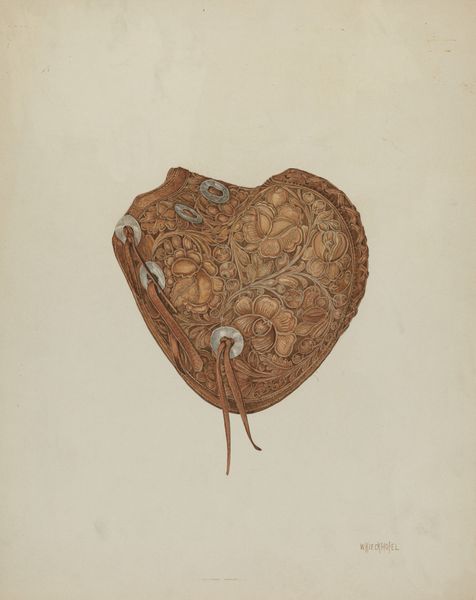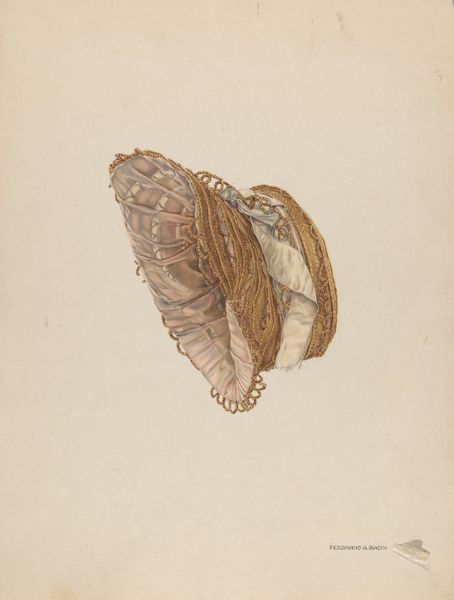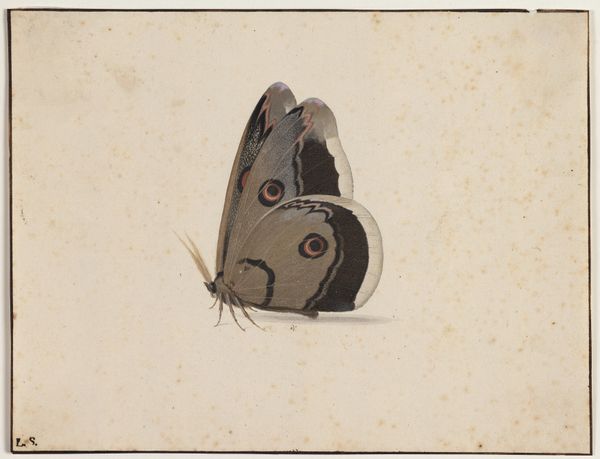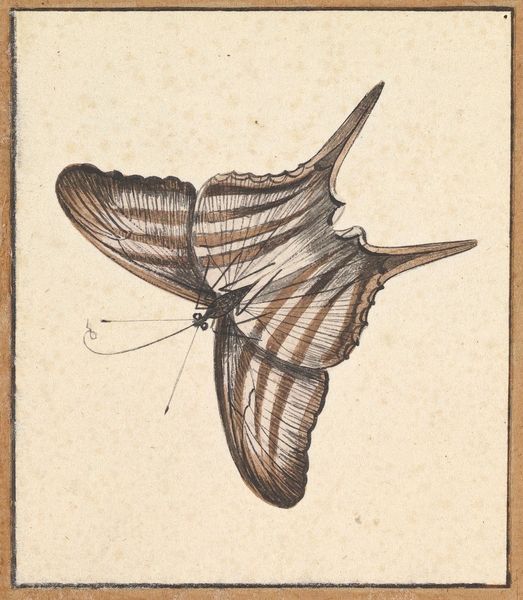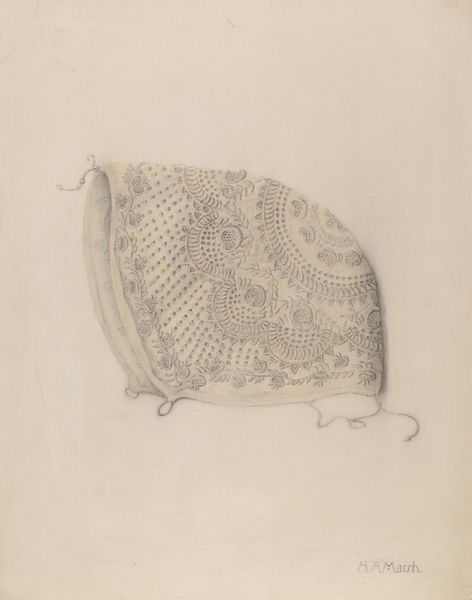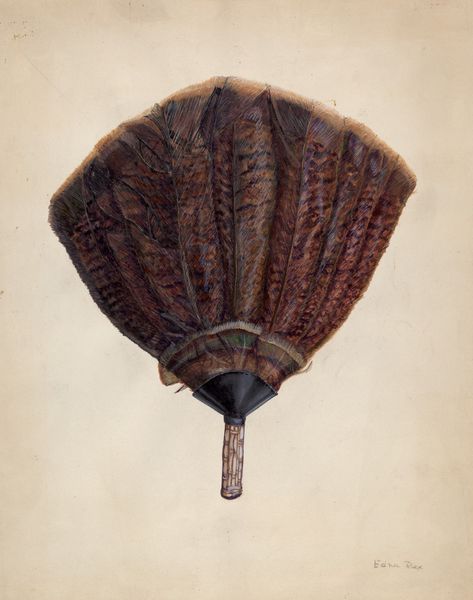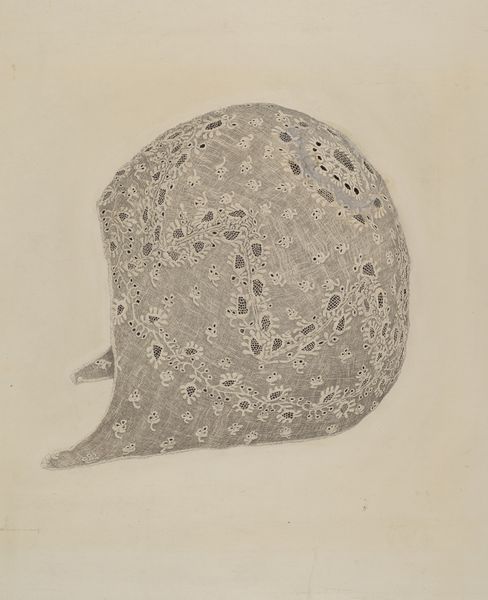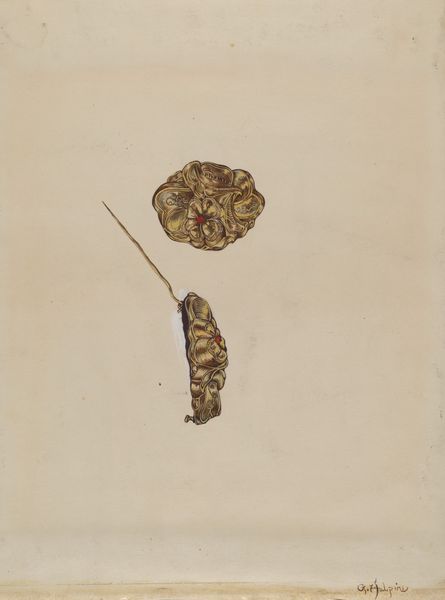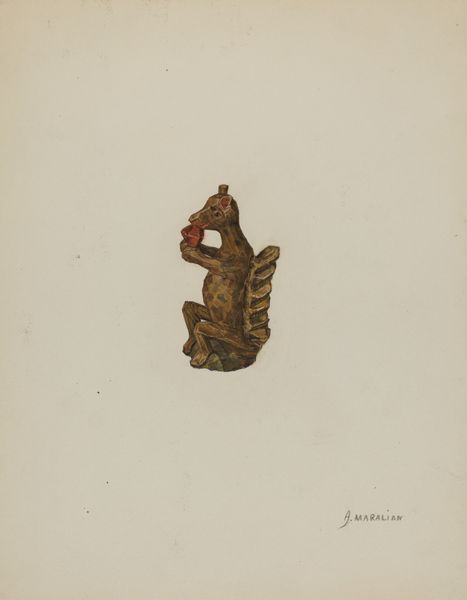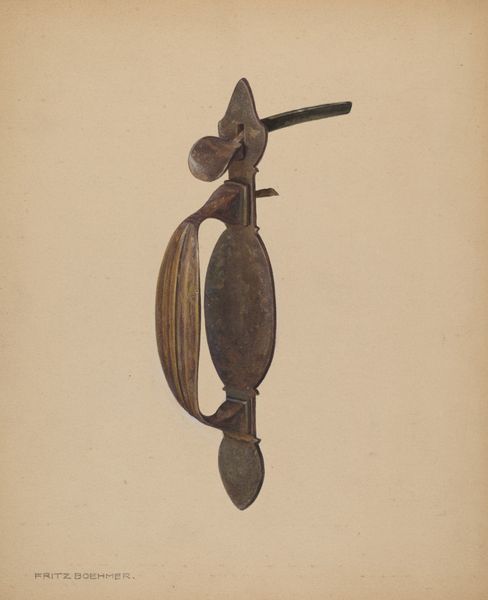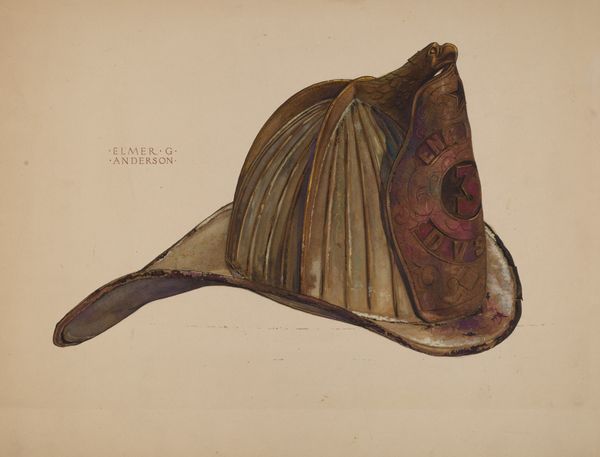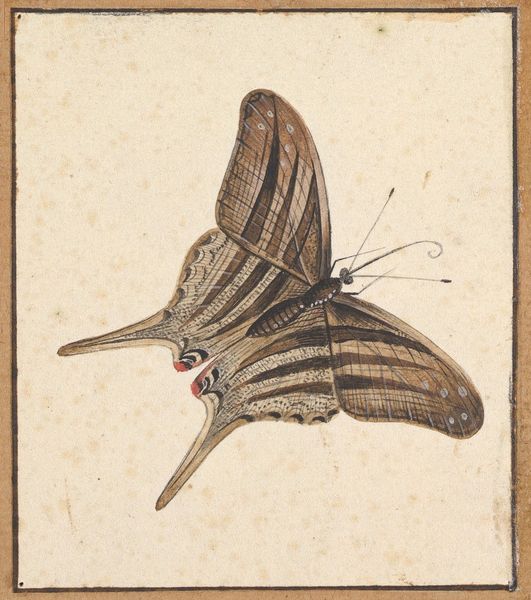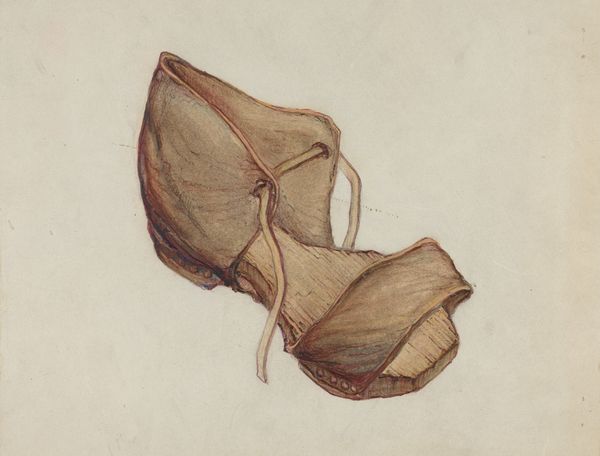
drawing, coloured-pencil
#
drawing
#
coloured-pencil
#
pencil drawing
#
coloured pencil
#
watercolor
Dimensions: overall: 35.6 x 26.8 cm (14 x 10 9/16 in.) Original IAD Object: 10" wide; 10" high
Copyright: National Gallery of Art: CC0 1.0
Editor: Here we have William Kieckhofel's "Stirrup," created around 1939, a drawing in coloured pencil. It's incredibly detailed, almost tactile, even though it's a drawing. The floral pattern on the stirrup itself is just exquisite! What stands out to you about it? Curator: Formally, the first thing that strikes me is the artist's manipulation of line. Note how the continuous, delicate linework carves out the floral design, and defines the shape of the stirrup itself. Consider also the strategic placement of the silver embellishments and how they punctuate the curvilinear design with geometric accents, which function as resting points for the eye. Editor: So it's a structured visual experience, you mean? The eye follows a path the artist carefully planned? Curator: Precisely. And consider how the limited colour palette further reinforces this structure. The earthy browns and subtle greys establish a muted base, allowing the details to emerge gradually. The colouration suggests a level of abstraction: we might focus on the composition before recognizing the representation. Are you perceiving how the shading is applied to simulate depth, providing dimension? Editor: Yes, now that you mention it. It's not just flat decoration; it's attempting to create a three-dimensional illusion on a two-dimensional surface. The detailing makes it. The values of color, the highlights and lowlights create its mass. Curator: Precisely. Note how those lines and forms intersect and how they define that central area. By creating focal points the artist creates not only interest but dimension and realism within an otherwise flat composition. Editor: Seeing how you break down the visual structure has definitely changed how I see it. I’m not just looking at a drawing of a stirrup anymore; I'm seeing a deliberate orchestration of visual elements. Thanks! Curator: And by carefully observing the composition and detailing within artworks we can uncover not just its intrinsic qualities but understand better art as a concept.
Comments
No comments
Be the first to comment and join the conversation on the ultimate creative platform.
